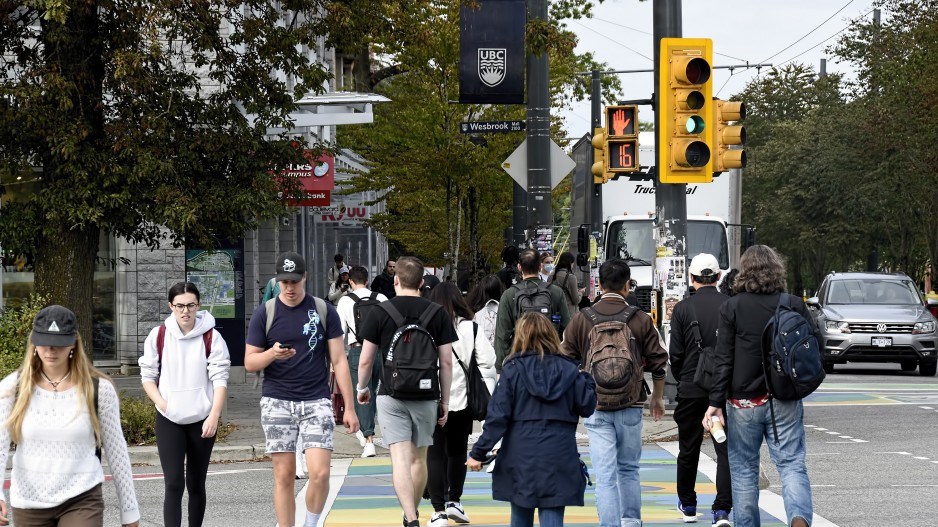It’s been almost a century – 98 years, to be exact – since the first automated traffic lights were installed in Canada, in Hamilton, Ontario.
While there have been some technology improvements to intersection control, most city traffic lights still operate on manually set timers, which is starting to look like a fairly crude way of managing modern traffic flows, given their increasing complexity.
“I want to thank traffic engineers everywhere for the limited tools they’ve been given – they’ve been doing an amazing job,” Tom Cooper, vice-president of public sector sales for No Traffic, said in a recent webinar on the findings of a University of British Columbia (UBC) study. “They no longer serve the purposes of the modern requirements.
“The scooter was not something that was contemplated in traffic and roadway planning 30 years ago. Nor was this phenomenon of Amazon deliveries. And then you’ve got the unintended consequences of this confluence of events – from distracted driving down to infrastructure challenges – [that] has resulted in an unprecedented level of accidents, injuries and fatalities at intersections.”
No Traffic, an Israeli-American company, was one of three technology partners that participated in a study at the UBC 91原创 campus that used 5G cellular network technology, computer vision and artificial intelligence to analyze pedestrian and vehicular traffic flows, and optimize traffic lights. The other partners were Rogers Communications Inc. (TSX:RCI.B), which provided the 5G network, and Nvidia (Nasdaq:NVDA), a U.S. company that makes artificial intelligence hardware and software.
Critical to the development of smarter traffic management and smart intersections is 5G technology, which provides the increased broadband and reduced latency needed to enable hundreds of “things” –like sensors and other technologies – to rapidly transmit, analyze and share massive amounts of data in real time.
The study at UBC was designed to test how smart traffic lights might reduce congestion at intersections. It confirmed that wait times at intersections for pedestrians, cyclists, cars and trucks can be significantly reduced using smart traffic technology that adjusts traffic lights to actual traffic flows.
For just the UBC campus alone, the study estimates an economic benefit of $165,000 if such a smart system were in place for full year.
“If we extrapolate these numbers, all across the city, then we get to really, really amazing numbers,” said No Traffic CEO Tal Kreisler. “The improvements of going to a real-time system makes an impact.”
Extrapolated across the entire city of 91原创, which has more than 700 traffic lights, the authors of the study estimate it could have a positive economic impact of $85 million annually.
The study, conducted in 2022, followed an earlier study in Kelowna in 2020, when UBC and Rogers used 5G technology to try to better understand how pedestrians, cyclists and motorists interact.
In 2019, Rogers installed 5G cell towers and equipment at UBC campus, making it Canada’s first 5G “smart campus,” and since then has been testing a number of applications, traffic control being one.
For the traffic experiment at UBC, nine signalized intersections at the campus were equipped with No Traffic sensors. Five were “optimized.” Patterns were studied for two weeks before and after the smart traffic system was activated.
The No Traffic sensors, which include radar capabilities, can distinguish between pedestrians, bicycles, scooters and larger vehicular traffic. The main goal of the experiment was to minimize wait times for pedestrians by using traffic flow data to switch traffic lights based on traffic flows, not timing alone.
At Westbrook Mall – which has a lot of pedestrian cross-street traffic – the typical average wait time for pedestrians and cyclists at intersections was 38 seconds. During the two-week trial with traffic light optimization, the daytime average went down to 22 seconds, according to a member of the UBC engineering department who spoke at the webinar that summarized the study’s findings.
“We managed to delay time for pedestrians by 40 per cent,” Kreisler said.
But it turned out that wait times for motorized traffic were reduced as well.
Over two weeks, the study found smart traffic technology reduced pedestrian delays by 93 hours, and vehicle delays by 181 hours. And since time is money, it was calculated that, spread over one year, the positive economic impact of the smart traffic system at just five intersections would be $165,000.
Over one year, it’s estimated the wait times for pedestrians would be reduced by a total of 2,500 days and 4,700 days for vehicles, according to a case study prepared by Nvidia.
“Additionally, it’s also estimated that the solution resulted in the decrease in carbon dioxide emissions by 75 [tonnes] and an estimated economic advantage of $165,000,” the Nvidia case study estimates.
Smart traffic control systems could potentially improve safety as well, especially when real-time data from cellular-connected cars are eventually brought into a modernized, 5G-based smart traffic management system.
Kreisler said the No Traffic technology can be easily integrated into existing traffic light systems, without requiring a total overhaul of the existing system. It just gets bolted on.
“We can integrate into any traffic light controller,” Kreisler said. “And, in short, in two hours we can connect any traffic light controller, or any traffic light, to the cloud.”




